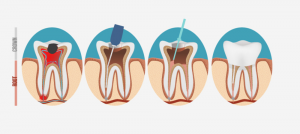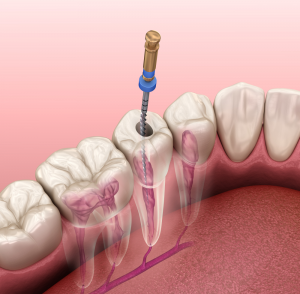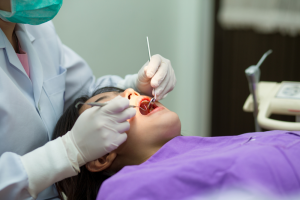Root Canal
Root Canal In Iran
Best root canal clinic in Iran

More than 35.000 Iranian and foreign patients are going under root canal clinic in Iran each year. root canal clinic in Iran is on top of the middle-east regarding its skilled specialists and surgeons.
Here are the best clinics for a root canal in Iran
- Peris clinic
Root canal cost in Iran
There is a significant difference between the cost of root canal in Iran and other countries. The most important factors for the low price of it in Iran are:
- A large number of root canal clinic in Iran
- A large number of applicants for root canal in Iran
Root canal treatment cost in Iran varies depending on the root canal and the clinic. An average cost of root canal in Iran is $100.
Root canal cost in Iran in comparison with other countries
This treatment costs $1,000 in the U.S., $900 in Europe, $700 in Thailand and $300 in Turkey.
Best root canal surgeon in Iran
More than 70.000 dental surgeries are being performed each year in Iran. Experienced Iranian doctors with an excellent record are performing the operations.
One of the most important factors for choosing a good surgeon for a root canal in Iran is a doctor has done many root canal.
You can find the best doctors for a root canal in Iran in our website by following their different experiences and before- after gallery.
Why should you travel to Iran for a root canal?
Many patients travel to Iran for the root canal. One of the reasons for this matter is Iranian specialists and surgeons who have high surgery success rates.
- Low cost of root canal in Iran
- Low cost of accommodation in Iran
- Well experienced doctors
- The high number of root canal in Iran
Root canal centres accordant with today's European standards are performing the highest quality operations in Iran. Another reason for a root canal in Iran is its lower cost compared to other countries.
How long should I stay for the root canal in Iran?
About Root Canal
 Teeth have one or two or three roots due to their type. Each tooth has a root canal and a pulp which contains living connective tissue, blood vessels and nerves. When this pulp becomes inflamed or infected, the root canal therapy is the solution to preserve this tooth. If tooth decay is not treated immediately, it engages and destroys enamel and dentin, and then involves pulp, too. In this stage, inflammation, swollen and often pain appear. In addition to dental decays, other factors such as a history of sudden trauma, extensive dental fillings, dental fractures, extreme tooth abrasion and advanced gum diseases are involved in the development of pulp disease. It is recommended to do root canal treatment, especially in complex cases, on supervision of an endodontic.
Teeth have one or two or three roots due to their type. Each tooth has a root canal and a pulp which contains living connective tissue, blood vessels and nerves. When this pulp becomes inflamed or infected, the root canal therapy is the solution to preserve this tooth. If tooth decay is not treated immediately, it engages and destroys enamel and dentin, and then involves pulp, too. In this stage, inflammation, swollen and often pain appear. In addition to dental decays, other factors such as a history of sudden trauma, extensive dental fillings, dental fractures, extreme tooth abrasion and advanced gum diseases are involved in the development of pulp disease. It is recommended to do root canal treatment, especially in complex cases, on supervision of an endodontic.
Recommended for
- Patients who are looking to restore the appearance and function of their teeth.
Before Root Canal
Before the root canal treatment, patients should tell their dentist about their medical history, some medicines and supplements should be avoided some days before the procedure under the supervision of the dentist. Patients can eat their meals as usual.
During Root Canal
 Initially, X-rays of the mouth and the infected tooth will be taken. Then local anaesthesia is administered, and after the numbness, the dentist starts drilling from the crown to make access to the pulp. The dentist removes infected pulp totally and cleans dental canal with disinfectants. Then he or she will expand the canal to make it easier to fill. This step may take several hours so the dentist may decide to continue it at the next meeting. Especially for premolars and back molar teeth which have two or three roots. In these cases, a temporary filling is used to prevent contamination and infection. In the second visit, the temporary filling is removed, the unfinished procedure ends, and the canal and pulp are filled with special fillings called gutta-percha and then it is sealed completely. It is often necessary to put a filling or crown to protect the tooth from subsequent damage.
Initially, X-rays of the mouth and the infected tooth will be taken. Then local anaesthesia is administered, and after the numbness, the dentist starts drilling from the crown to make access to the pulp. The dentist removes infected pulp totally and cleans dental canal with disinfectants. Then he or she will expand the canal to make it easier to fill. This step may take several hours so the dentist may decide to continue it at the next meeting. Especially for premolars and back molar teeth which have two or three roots. In these cases, a temporary filling is used to prevent contamination and infection. In the second visit, the temporary filling is removed, the unfinished procedure ends, and the canal and pulp are filled with special fillings called gutta-percha and then it is sealed completely. It is often necessary to put a filling or crown to protect the tooth from subsequent damage.
Recovery
When the patient still has the temporary filling, flossing is avoided, but they can floss the treated tooth as a part of oral hygiene. After the loss of numbness, they can eat, but it is recommended to eat with the opposite side and generally avoid hard and sticky foods or hot beverages until the tooth is completely healed. Feeling the pain and also sensitivity or tenderness is normal in the first days after the procedure.
